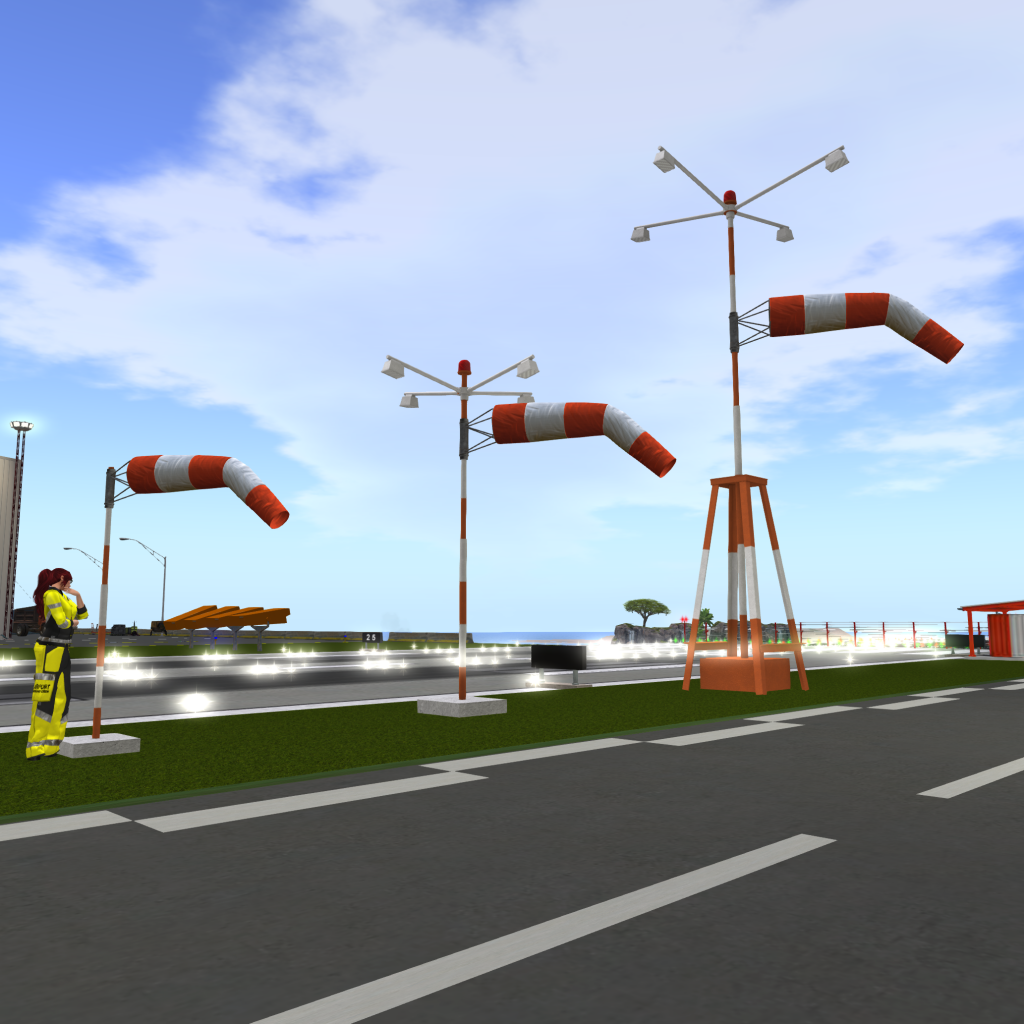Airport Windsock
|
Airport Windsock |
1 Introduction
The Airport Windsock from Shergood Aviation uses animesh to create a unique aviation product for your airport. Features include:
- Over 20 separate animations for different wind conditions
- Speed/direction controlled via Shergood or Linden wind
- Conforms to FAA standards for windspeed vs bend location
- Medium and large versions include flood lights and beacon
- Lights controlled via menu or Nexus Lighting System
- Full materials on sock fabric and support structure
- Manual control mode
- Comes in small, medium and large sizes
2 Basic Usage
To use your windsock, simply rez the base of the desired size at the desired location. The base will rez the actual sock which will immediately begin interacting with the current wind. The sock is made with animesh with separate animations for windspeeds between 0 and 20 knots. By default, the windsock will show wind from the Shergood Weather System, but you can also configure it to use Linden wind, commands on a specified chat channel, or to simply cycle through the wind speeds.
While the sock is a separate object form the base, it will automatically track the position of the base as you move it, as long as you remain in the same region, and keep any movements to no more than 200m in one move. If you delete the base, or if the sock looses track of the base, it will self-delete. If the sock is lost for any reason, you can click the base and select RESET from the menu to reset the scripts and cause the sock to be rerezed.
2.1 Lighting Control
The medium and large versions of the windsock come with a flashing beacon and flood lights. The lights can be controlled through a menu by clicking the base. The menu includes buttons for MASTER, beacon, and flood with an indicator to show which switches are on or off. The MASTER switch can be used to turn off the entire system and is normally kept in the ON position. The flood and beacon are then controlled by the other two buttons.
3 Configuration
The windsock contains two configuration notecards *config and _light-cnf. The _light-cnf controls the look and feel of the lighting and normally never needs to be modified. The section will focus mainly on the *config notecard.
The default *config notecard contains the following:
# # Basic windsock configuration # TYPE: sa # sa, linden, sequence, chat CHAN: 9 # channel for manual control (only applies to "chat" type) PREFIX: wind # prefix for manual wind commands (only applies to "chat" type) SCALE: 3.45235 # speed scaling (only applies to "linden" type) OFFSET: <0,0,1.9592> # offset for rezing sock ACCESS: owner # who can access the switch menus (list including owner, group, or usernames) # # Configure for Nexus compatibility. # nexus_enable: 0 # use 1 to enable, 0 to disable nexus_BreakerID: windsock # Breaker name (covers all lights on device) nexus_SwitchID_flood: windsock.flood # Flood light ID nexus_SwitchID_beacon: windsock.beacon # Beacon ID
Each line consists of a key/value pair separated by a colon (:). Comments are any text from a # to the end of the line.
